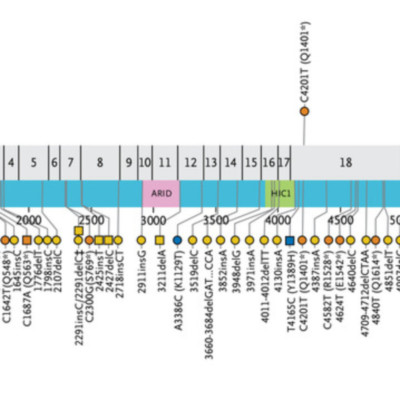Abstract
Ovarian clear-cell and endometrioid carcinomas may arise from endometriosis, but the molecular events involved in this transformation have not been described.
We sequenced the whole transcriptomes of 18 ovarian clear-cell carcinomas and 1 ovarian clear-cell carcinoma cell line and found somatic mutations in ARID1A (the AT-rich interactive domain 1A [SWI-like] gene) in 6 of the samples. ARID1A encodes BAF250a, a key component of the SWI–SNF chromatin remodeling complex. We sequenced ARID1A in an additional 210 ovarian carcinomas and a second ovarian clear-cell carcinoma cell line and measured BAF250a expression by means of immunohistochemical analysis in an additional 455 ovarian carcinomas.
ARID1A mutations were seen in 55 of 119 ovarian clear-cell carcinomas (46%), 10 of 33 endometrioid carcinomas (30%), and none of the 76 high-grade serous ovarian carcinomas. Seventeen carcinomas had two somatic mutations each. Loss of the BAF250a protein correlated strongly with the ovarian clear-cell carcinoma and endometrioid carcinoma subtypes and the presence of ARID1A mutations. In two patients, ARID1A mutations and loss of BAF250a expression were evident in the tumor and contiguous atypical endometriosis but not in distant endometriotic lesions.
These data implicate ARID1A as a tumor-suppressor gene frequently disrupted in ovarian clear-cell and endometrioid carcinomas. Since ARID1A mutation and loss of BAF250a can be seen in the preneoplastic lesions, we speculate that this is an early event in the transformation of endometriosis into cancer. (Funded by the British Columbia Cancer Foundation and the Vancouver General Hospital–University of British Columbia Hospital Foundation.).
